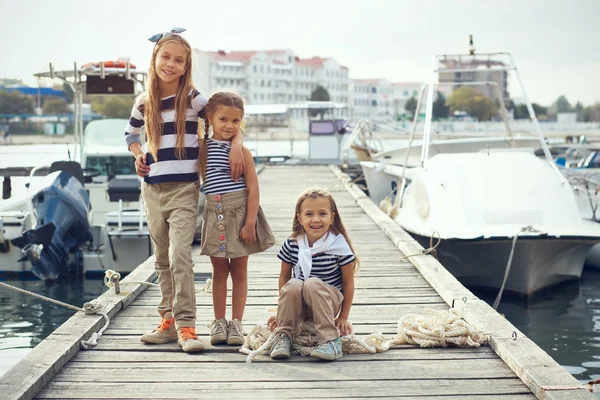Uncategorized
The Role of Colors in Kids’ Fashion: What to Choose for Different Ages
Colors play a significant role in children’s fashion, influencing mood, personality expression, and even developmental stages. Choosing the right colors for your child’s wardrobe is more than just picking their favorite shade; it’s about finding a balance between practicality, personality, and age-appropriate styles. This guide will help you understand the role of colors in kids’ fashion and how to choose the best hues for different age groups.
1. Why Colors Matter in Kids’ Fashion
Colors can impact how children feel and how others perceive them. They are not just about aesthetics but also functionality and psychology. Bright and cheerful colors can boost energy, while softer tones promote calmness and relaxation. They allow kids to showcase their individuality and preferences and play a role in seasonal and cultural trends. By understanding the importance of color, you can build a wardrobe that aligns with your child’s personality and needs.

2. Colors for Babies (0–2 Years)
At this stage, comfort and practicality are the primary considerations, but color choices still make a difference. Soft pastels such as pinks, blues, yellows, and greens create a gentle and calming aesthetic that complements a baby’s delicate nature. Neutral tones like beige, cream, and light grey are versatile and timeless, making it easier to mix and match outfits. Adding bright accents such as red, orange, or turquoise to accessories or details brings fun and vibrancy without overwhelming the outfit. When choosing colors, consider shades that can easily hide stains, as babies are prone to spills and messes.
3. Colors for Toddlers (2–4 Years)
Toddlers are full of energy and curiosity, and their clothing should reflect their playful spirit. Primary colors such as red, blue, and yellow are visually stimulating and fun, perfectly matching their active personality. These bold shades encourage creativity and exploration. Incorporating patterns with animals, cartoons, or shapes alongside these colors adds whimsy and excitement to their outfits. Earthy tones like olive green, rust, or mustard are practical for outdoor play and offer a trendy, natural look. Color-coordinated sets can make dressing your toddler simpler while keeping them stylish and put-together.
4. Colors for Young Children (5–8 Years)
Children in this age range start developing their unique style preferences. Vibrant hues like orange, teal, or magenta are often favorites, as they convey confidence and energy. Multicolor outfits that mix and match complementary shades reflect their adventurous nature. Including sporty color combinations, such as navy and white or black and neon green, can cater to kids who are more active. Parents can use this stage to guide their kids in experimenting with color coordination, teaching them to pair bright colors with neutrals for balance.

5. Colors for Tweens (9–12 Years)
Tweens are more likely to want a say in their wardrobe, as their sense of identity becomes stronger. Subtle and sophisticated colors like deep blues, purples, or muted greens are often appealing as they provide a more grown-up feel. Neutral tones such as black, white, and grey are also popular, offering a minimalist and versatile style. However, pops of color through accessories or statement pieces can add personality without overshadowing their overall look. This stage is perfect for experimenting with trendy shades like coral or lavender, which are both stylish and age-appropriate.

6. Seasonal Color Choices
Colors often change with the seasons, and incorporating them into your child’s wardrobe can keep their outfits fresh and relevant.
- For spring, pastel tones such as mint green, peach, and soft lavender mirror the blooming season.
- Summer calls for bright and cheerful colors like yellow, aqua, and hot pink that reflect the energy of sunny days.
- In fall, earthy tones like burnt orange, maroon, and mustard create a cozy and seasonal vibe.
- Winter outfits often feature rich, deep shades such as navy blue, forest green, and burgundy, complemented by neutrals like cream and charcoal grey.
7. Practical Tips for Choosing Colors
When building your child’s wardrobe, consider these practical tips for selecting colors:
- Stick to a color palette to make mixing and matching easier.
- Choose colors that suit your child’s skin tone and hair color for the most flattering look.
- Include stain-friendly colors, especially for younger kids prone to spills.
- Allow your child to have input in color choices to encourage their self-expression.
Conclusion
Colors are more than just aesthetic choices in kids’ fashion. They play a vital role in expressing personality, supporting development, and creating visually appealing outfits. By understanding the significance of colors for different ages, parents can make thoughtful wardrobe decisions that align with their child’s needs and style. Whether it’s the soft pastels for babies, bold primaries for toddlers, or trendy shades for tweens, the right colors can elevate any outfit while ensuring your child feels confident and comfortable.


